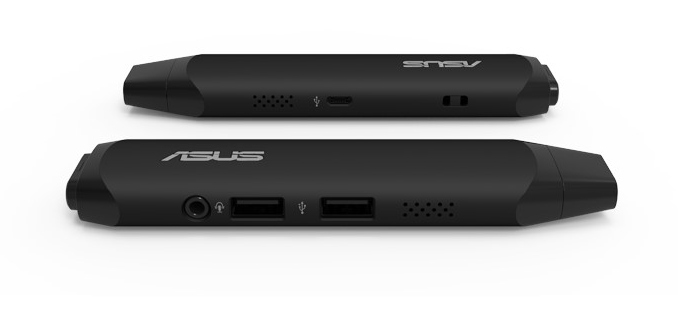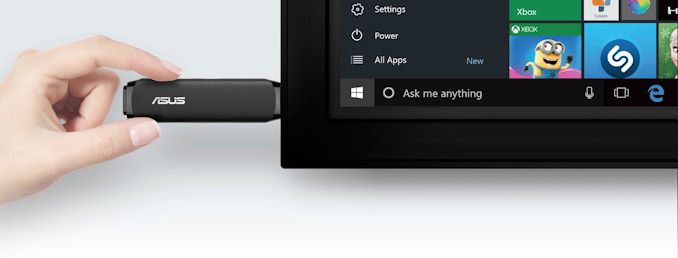Intel’s Compute Stick, a self-contained PC-on-a-stick that could be used to transform any display into a PC, was an interesting concept when it was revealed several years ago. However it never really took off in the intervening years, due in part to limitations imposed by the form factor, leading to the chipmaker to abandon the project. Still, the Compute Stick did find a small but apparently loyal user base who remained interested in the niche solution, and so this week ASUS is introducing a new version of its VivoStick PC TS10 with more RAM and Windows 10 Pro.
First introduced back in 2017, the original ASUS VivoStick PC TS10 was based on Intel’s Atom x5-Z8350 SoC (Cherry Trail with 4 Airmont CPU cores), which was accompanied by 2 GB of LPDDR3-1600 memory as well as 32 GB of eMMC storage. The newly updated VivoStick PC TS10, model TS10-B174D, sticks with the same chassis and uses the same SoC, but it is now equipped with 4 GB of LPDDR3 memory as well as 64 GB of storage. Furthermore, the new unit also runs Microsoft’s Windows 10 Pro, replacing Windows 10 Home used in the original model.
Otherwise, the VivoStick is essentially unchanged from its earlier incarnation. The unit has two USB Type-A ports (2.0 & 3.0), a Micro USB connector for power, an combo audio jack, and an HDMI 1.4 connector for video out.
The original VivoStick TS10 with Windows 10 Home was designed primarily with consumer and SOHO applications in mind, and many retailers still sell it as a media streaming player that offers Windows 10 flexibility and can run loads of applications. But with the updated VivoStick TS10, ASUS seems to be broadening their niche just a bit, especially with access to Pro-focused features like Active Directory support and Microsoft Update for Business. Potentially, this means that ASUS can position the new VivoStick PCs differently and aim customers who need cheap miniature computers with business-class features and security.
So far, ASUS has introduced its revamped VivoStick PC TS10 in Japan and has not disclosed its pricing. All told, it is pretty strange for a PC maker to introduce an improved version of a three-year old product, so it will be interesting to see just what ASUS has in mind for their updated compute stick.
Related Reading:
- The Intel Compute Stick (Core m3-6Y30) Review
- The Intel Compute Stick (Cherry Trail) Review
- Intel Expands Compute Stick Family with Cherry Trail and Core M Models
Source: ASUS Japan (via Hermitage Akihabara)
from AnandTech https://ift.tt/2Patg7D
via IFTTT


0 comments:
Post a Comment